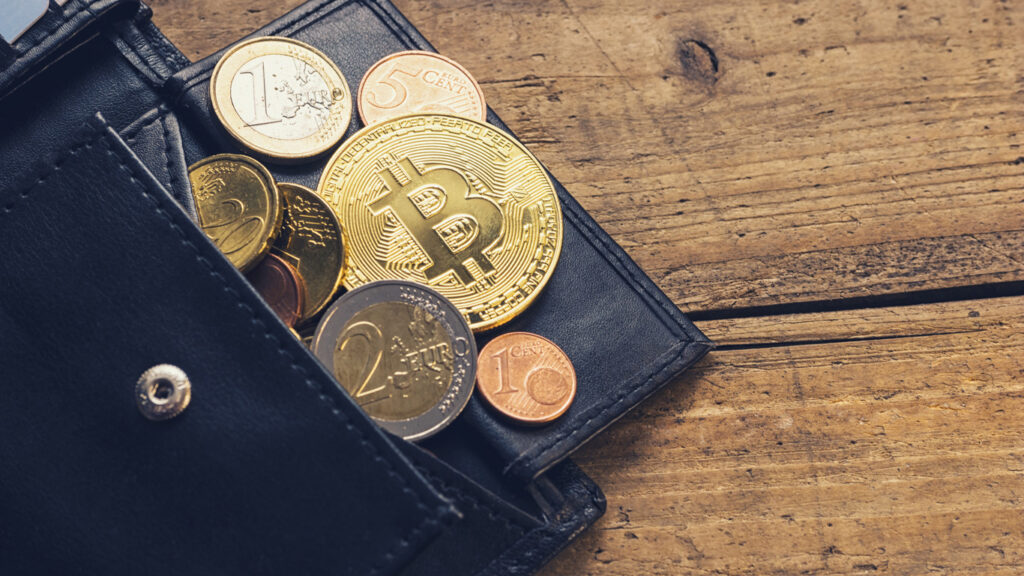A digital wallet on computer, USB stick or smartphone allows its owner to pay for goods or services on the internet. Many simply hold their crypto money there and hope for an increase in value, and then turn it back into fiat money, i. e. Euros, US dollars etc., or just another cryptocurrency. Who wants to save his credit this way, purchases for example by credit card or bank transfer cryptocurrencies. And then the digital money is stored here once …
But how safe is it to hoard tons of money on the computer? Especially for crypto newbies, this idea may be rather scary – because the headlines grow of hacker groups steal digital money. Cryptocurrency in a cyberwallet isn’t necessarily less secure than having your assets at home under the bed or in a bank account. It’s probably more the unknown, which makes many hesitate to own a digital safe.
The A and O: encryption
Strictly speaking, a wallet stores not the money but two keys: the so-called private and public key. The public key works like a public address or can be compared to the IBAN of a bank account. This key identifies the respective wallet and is e.g. specified to send tokens to your wallet. Anyone who knows the public key can transfer cryptocurrency to it or can find out via special websites like e.g. Etherscan how many tokens are in the wallet.
The private key works like a login or code for a safe – anyone who knows it can open the safe and transfer or take money. Therefore, only the owner should know this key.
Generally spoken, the public key is there to encrypt and the private key to decrypt something. You should keep the private key so that no one else can access it and of course it must be protected from fire or water damage at the same time (more about this later). Above all, caution is required when generating the keys – because this can also be done online or offline. Therefore, at this moment there is already the danger that the key comes into the hands of hackers. To avoid this, you have to understand the different ways to generate wallets.
What types of wallets are there?
A purse isn’t a purse – at least this applies to the digital world. Anyone who wants to buy crypto money, first and foremost, is looking for a safe place to save the newly acquired money and has the choice. But which variants are there? What is the safest? And what advantages and disadvantages do the individual wallets have?
There is a distinction between hot and cold storage resp. wallet. A “hot” wallet can figuratively always be carried with you. A “cold” wallet on the other hand, is more comparable like having a safe at home or in the bank. Basically, if you want to pay often with your crypto money and carry out frequent transactions, you should always have your crypto wallet with you (hot wallet). But if you want to keep your digital money for the long term and sell it only if you want to increase your value – you should have a safe at home (cold wallet).
Hot wallet
Owners of a hot wallet keep their money on hardware (computers, laptops, tablets) connected to the internet. The wallet is simply installed on the device and can be used daily to buy goods and services or to transfer currencies. A major disadvantage is the connection to the internet – at any time there is a risk that the device is hacked. Therefore, you should use a hot wallet as a real purse and only have the money with you, what you need and spend for the moment. Meanwhile the capital that you want to save is stored on a cold wallet. Attention: In addition to hacker attacks, the hardware can also be damaged or stolen – so it’s important to have a backup copy of your private key to restore the wallet to another device.
- Online/ Cloud wallets: Users open an online account at a provider/ an exchange and have access to it from any device connected to the internet. Attention: the private key is stored online.
- Desktop/ Mobile wallets: Desktop wallets are downloaded to your own PC (examples: MultiBit, MetaMask, Armory and Jaxx) or installed via smartphone app (examples: MyCelium and CoPay). So you can only access the wallet with the respective device.
- Multi-signature wallets provide more security by assigning a number of keys to a wallet that different users receive. They work like a kind of backup, because you need the consent of others to carry out transactions. This type of wallet is suitable for e.g. for companies with multiple directors who want to decide on transactions together.
Cold wallet
Cold wallets are installed on devices that aren’t connected to the internet and are therefore the best choice for crypto investors who want to store their tokens in the long term (months to years). Disadvantages here are above all damage (fire, water) or theft – for that they are absolutely safe from hacker attacks. Anyone who just wants to transfer a few coins, will soon realize that this is a bit more complicated with the cold wallet.
Hardware wallets are external physical devices used to store your cryptocurrency. They are like a kind of USB stick and can be purchased at a dealer of your confidence. The advantage is that these devices were never connected to the internet and therefore can’t be manipulated. However, there are cases where vendors fraudulently set up the hardware so they can still access it after the sale. If you want to avoid this stress, buy the hardware directly from the manufacturer. Because if it’s lost or damaged, these wallets can be restored by a private key, so you should keep the private key separately (examples: Ledger Nano S, Trezor, Keepkey).
Paper wallets are the safest way to hold your digital wealth because you just have to take care of a piece of paper. In that case you write or print your two keys on one or more papers that you keep safe. The disadvantages: The keys can be stolen in a burglary, external influences can damage paper quickly and of course you can easily forget where you have stashed the keys. If you want to set up a paper wallet, you have to generate your keys online (for example, via MyEtherWallet) – of course there is also a risk here that the program that creates the keys will be hacked. Anyone who is experienced, can read in html code to see if the program is hacker-free. Those who want to be sure, generate their keys offline, make a note of it on paper and uninstall the program. Detailed instructions on how to generate secure paper wallets can be found here.
No matter which kind of cyber wallets you choose, you should first think carefully about what you want to do with the digital money (invest or pay) and how risk-taking you are. Fact is: investing in a cryptocurrency is no longer that easy possible today, as it might have been a few years ago.
It’s therefore important to deal with the topic beforehand and take enough time to generate the wallet. And that’s almost as expensive as creating a bank account. Important: Crypto investors should take care of their keys at least as well as on credit card pins or TAN numbers. And that’s probably the biggest and most important commonality of the real and digital financial world: If the key is gone, the money is gone.







